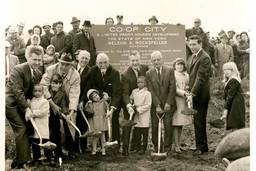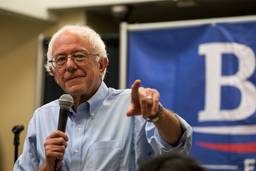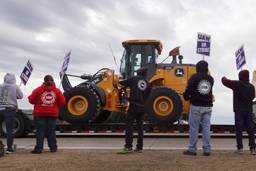
This article was first posted by Jacobin.
The Left has a long tradition of asking ourselves, “What is to be done?” Ever since Lenin posed this rhetorical question, it has served as the hook for an ever-expanding genre of think pieces and calls to action on every imaginable social-movement dilemma.
“What is to be done?” bounces from movement to movement, crisis to crisis, and occasionally illuminates more foundational existential problems of the Left. In that spirit, Jacobin’s recent “Rank and File” issue examined one of our more urgent contemporary questions: what is to be done to revitalize the labor movement?
Contributors offered up numerous diagnoses and prescriptions. Charlie Post pointed out the crucial role the militant minority played in labor’s twentieth-century successes; Jane McAlevey called for “whole worker organizing,” Joe McCartin urged unions not to squander the brief window between the Friedrichs decision and the next attack on collective bargaining rights; and Sam Gindin proposed the “class-based left” as an alternative to social movement unionism.
Since publication of these articles, labor’s crisis has deepened. The right wing now controls all three branches of the federal government and the majority of states. The sequel to Friedrichs, Janus v. AFSCME, is headed for the Supreme Court, threatening to decimate public-sector unions nationwide. Talk of a national right-to-work law is spreading.
Figuring out “what is to be done” has only become more urgent. But there’s a problem with this question, evident first at the level of grammar. “What is to be done?” commits every writing teacher’s cardinal sin: the passive voice. Who is the subject here? Who is going to do what needs to be done?
The absence of an active subject is more than a grammatical problem — it represents the problem of the labor left. The militant minority is small to nonexistent, and it’s not even clear who is going to do the work to rebuild it. There is a large gap between the intellectual left and the working class it discusses.
Working-class voices are rare among the talking heads who dominate left discourse. Most theorists on the Left write of labor from the perspective of intellectuals who stand above the class struggle, rather than workers in the thick of it.
The decision-makers for labor are often literal miles away from their own rank and file. As a result, we more often talk about unions organizing workers than workers organizing unions. Workers are positioned as the objects rather than the subjects of their own organizations.
This alienation manifests in a variety of ways: members don’t participate in meetings, are unready or unwilling to strike, accept concessionary bargaining, and as the recent election made clear, express alarming levels of support for right-wing candidates.
Labor liberals believe these problems can be corrected with small-picture fixes: social media, paper coalitions with community groups, narrow campaigns against this or that particular right-wing legislation, and other tactical shifts that leave the structure of the union unchanged. The present moment shows that this band-aid approach has failed to reverse labor’s decline.
And even if they could, they would not go far enough. The labor left must seek not just to salvage labor’s existing institutions but to transform them and build new ones. Our goal should be to make workers the subjects rather than the objects of their own organizations — and of history.
Our prescription for the labor movement’s renewal needs a new grammar. Instead of asking “What is to be done?”, we could start with a different question: “What should I do?”
As it turns out, the right-wing hecklers we’ve all encountered are half right: we should get jobs. And then we should do what we tell workers to do all the time: organize our workplaces.
This tactic has a name and a history. It’s called “salting,” and it was foundational to the development of the American labor movement.
Salts of the Earth
Salting has deep roots in the history of the labor movement and the Left. It has gone by many different names: industrialization, industrial concentration, “colonization” (a tone-deaf term used by the Communist Party in the 1930s), and “l’Établi” in French, which denotes establishing yourself in a workplace.
Each term reflects a slightly different application of the same basic idea: getting a job with the express purpose of organizing the workplace.
Salting built and sustained all of the major labor upsurges in the twentieth century. In fact, it was once so foundational to labor activism that it didn’t even have a name — workers guided by radical ideologies simply organized where they were, building the labor movement as they went.
Both the Knights of Labor and the Industrial Workers of the World (IWW) owed their success to attracting members among immigrant and itinerant members in radical politics, which they carried with them into factories and sweatshops. Every member was a salt, and everyone organized — not just the professionals.
The IWW became a school for struggle for a generation of organizers, many of whom subsequently joined other radical groups and built the CIO. Weathering the doldrums of the 1920s, these militants kept the seeds of labor radicalism alive, ready to blossom into militancy when the political climate changed.
All of the landmark general strikes of 1934 — the Minneapolis Teamsters Strike, the San Francisco Waterfront Strike, and the Toledo Auto-Lite strike — came to fruition thanks to years of painstaking shop-floor organizing by cells of radical workers in various socialist organizations.
The mass strikes the militant minority catalyzed led to the labor movement’s institutionalization with the passage of the National Labor Relations Act in 1935. Ironically, this institutionalization created contradictions that would call forth a new wave of rank-and-file struggle several decades later.
When the militant minority appeared again in the late 1960s and early 1970s, it had to face not just the employers, but also unions that were more used to partnering with corporations than fighting them.
Like the mass actions of the late nineteenth and early twentieth centuries, the wildcat strike wave of the 1960s and ’70s — documented in the collection Rebel Rank-and-File—started with radicals bringing their politics to work. This time, it wasn’t socialist and anarchist immigrants, but black power activists, campus radicals, and former GIs, all fresh from the struggle in and against the Vietnam War.
In Detroit especially, conscious organizing aided spontaneous mass radicalization. Founded by student and worker radicals with deep roots in the city’s black working class, the League of Revolutionary Black Workers (LRBW) organized against the racist hierarchy of American capitalism both on the job, in the UAW leadership, and in society more broadly.
As Detroit smoldered from the Great Rebellion of 1967 — a working-class uprising that took 17,000 soldiers and 155,576 rounds of M1 ammunition to quell — the LRBW adopted a revolutionary strategy of activating the industrial power of the black working class in the beating heart of American industrial capitalism. Salting quickly became a key weapon in their arsenal.
General Baker, one of the organization’s leading militants, got a job in the Dodge Main plant and began to organize. On May 2, 1968, organizing bore fruit: a wildcat strike of four thousand workers shut down the plant in response to racist firings. The company retaliated with more racism: Baker and twelve other workers lost their jobs for organizing the strike.
The auto industry attempted to blacklist Baker, and the UAW refused to defend him or his coworkers. But, using a pseudonym, he eventually got a job at the Ford Rouge plant (the largest factory in the world at that time) and quickly became chair of the facility’s UAW local.
The League went on to organize workers in factories, hospitals, a UPS distribution center, the Detroit News, and all across the city. It planned wildcat strikes, challenged the UAW’s undemocratic and racist practices, protested police brutality, won exoneration for a worker who had murdered two foremen, got the city to dismantle a racist anti-gang police unit, built a bridge to middle- and working-class whites through a massively popular book club, created a publishing house, bookstore, and press, and produced a documentary about their work.
The League’s successes were possible because of the complementary relationship between radicals getting a job to organize and workers organizing on the job after they had been radicalized — either in the plants or on the streets. The achievements of the LRBW, followed by a nationwide wave of wildcat strikes in the early 1970s and the perception that sixties social movements had reached their limits, inspired a generation of radicals to turn to the working class.
The turn to the working class
Marxists dubbed Detroit the “American Petrograd.” Former student activists began arriving in the city in droves, taking factory jobs and hoping to help form a working-class subject that could finish the revolution the previous decade’s social movements had started.
It was a global phenomenon. In France, many radicals located the failure of the 1968 general strike in the weak connections between workers and student radicals. Espousing the classic Marxist view of the industrial proletariat as the revolutionary subject par excellence, a small number of radicals entered factories and worked to understand and overcome workers’ lack of revolutionary impulse — a story told in Robert Linhart’s gripping first-person narrative The Assembly Line (aptly titled L’Établi in French).
In Italy, the ’68 rebellion lasted a full decade. Scores of independent worker organizations sprung up in factories under the banners of autonomia, coming closer than any other movement to creating a lasting organization through which the militant minority could influence national politics.
Max Elbaum tells the story of the American turn to the working class. He notes that polls showed three million Americans in favor of revolution in 1971, at a time when the population of the United States was a third smaller than today. Of these three million, a hard core of more than ten thousand formed the New Communist Movement.
The shifting constellation of organizations that made up this movement primarily came from the mostly white, ex-student milieu and national liberation movements in communities of color. Inspired by Marxist-Leninist thought, many groups sent members into heavy industry, with varying approaches to engaging their coworkers in anticapitalist struggle.
According to historian Kieran Walsh Taylor’s account, these radicals enjoyed some success, notably in supporting strikes and reform initiatives, undermining white working-class racism, and launching feminist interventions both at work and in the labor movement more broadly. But cumbersome political baggage undermined their cadre’s long-term effectiveness.
Taylor explains that Maoist transplants in mines, mills, and workshops tried to incite their coworkers to poorly planned militancy, or worse, spent their political capital fighting other political organizations in the movement over accusations of “revisionism.”
Further, this movement too often understood “proletarianization” as the emulation of a caricatured working class, complete with patriarchal gender roles and unexamined homophobia. Male members were expected to keep their hair short, avoid countercultural expressions, and live what the party considered a normal working-class life.
Ironically, this cultural conservatism happened at a time when the working class was increasingly abandoning traditional mores. Women were fighting sexism, the LGBTQ movement was challenging homophobia, and radicalism in general was growing.
The New Communist Movement failed to recognize the liberatory political shift already underway, instead ascribing to Leninist orthodoxy — for them, the vanguard party knew what was to be done, and they had to deliver this news to the workers.
This top-down mode of operating impacted the lives of cadre. Members were often sent to work in jobs they were ill-prepared to handle physically or socially. Some struggled with the strains of back-breaking labor and to connect with coworkers from vastly different class and race backgrounds. All of these factors reduced these organizing projects’ lifespans, and most collapsed after a few years at the longest.
One instructive exception to the New Communist Movement’s rapid failure can inform our efforts to do better. The Sojourner Truth Organization (STO), described by Michael Staudenmeier in Truth and Revolution, based its interventions on a more dynamic understanding of class formation: a theory of “dual consciousness” derived from Gramsci and W. E. B. Dubois.
STO believed that workers hold multiple and contradictory interpretations of their reality simultaneously. In their formulation, the militant was tasked with drawing out the socialist side of workers’ consciousness while dismantling retrograde ideas. This activity did not precede collective action, but happened through the process of class struggle itself.
The party’s task then became to
discover and articulate the forms of thought, action, and organization which embody the potential of workers to make a revolution. These patterns are manifested, embryonically, in the course of every genuine struggle … [T]he real work of the party involves linking these fragmentary autonomous elements and socializing them into a new culture of struggle.
Many STO militants salted in Chicago’s factories, entering a world rich with working-class struggle. There they would participate in and encourage shop-floor confrontations, facilitate connections between rank-and-file militants, and offer resources that would allow workers to win campaigns without or against hostile union bureaucracies.
The recession of the early 1970s, accompanied by the early stages of neoliberalism and globalization, snuffed out the organic militancy that had attracted New Communist radicals. Theoretical debates — like the correct orientation to China as it integrated into world capitalism — and of course more mundane issues like personalities and egos eventually tore apart the declining movement.
During periods of militancy, the line between salting and rank-and-file rebellion blurs, as was the case not only with the League of Revolutionary Black Workers but also the Knights of Labor and IWW. When the tide of insurgency recedes — as it did in the early 1970s — the militant minority ends up isolated, a revolutionary fish without a sea to swim in.
While much of the Left burned out and fell apart in the late 1970s and early 1980s, one current of radicals managed to sustain themselves: the International Socialists, which founded the Labor Notes project and later split into Solidarity and the International Socialist Organization (ISO).
For over thirty years, Labor Notes has sought to build rank-and-file power within unions through opposition caucuses, in which militant members take over and transform their unions. Kim Moody’s pamphlet “The Rank and File Strategy” clearly lays out the strategy, whose notable successes include Teamsters for a Democratic Union, responsible for the 1997 UPS strike, and the 2012 Chicago Teachers Strike, organized by a caucus of radicals using a similar model.
When the first edition of Labor Notes rolled off the presses in 1979, its publishers had no way of knowing that it would become the chronicle of rank-and-file revolt against the concessionary bargaining that marked the 1980s labor movement. More than a keeper of the flame, Labor Notes stoked a resurgence of militant unionism. It represents a modern take on the Trade Union Educational League, a network of AFL members who tried to “bore from within” the conservative union and transform it into a radical organization.
Business unionism
Labor Notes has helped transform many unions in our own time, leading to several strikes that have left an indelible mark on history. But the business unions have transformed themselves since the 1920s as well, in ways that complicate the task of expanding the militant minority. There was nothing preordained or natural about this evolution. It came out of a political struggle — one that the Left mostly lost.
Labor’s landmark victories in the 1930s resulted from rank-and-file insurgency waged on shop floors all across the United States. Staughton Lynd’s We Are All Leaders: the Alternative Unionism of the Early 1930s sketches out this history in a series of detailed case studies. Unfortunately, the democracy, radical politics, community connections, and capacity for mass direct action that these unions built represents a road not taken in the US labor movement.
The 1935 National Labor Relations Act (NLRA) marked one of the early battles. The legislation states:
It is declared to be the policy of the United States to eliminate the causes of certain substantial obstructions to the free flow of commerce and to mitigate and eliminate these obstructions when they have occurred by encouraging the practice and procedure of collective bargaining.
The goal was to move class struggle from the streets — where armies of workers battled armies of cops — to office buildings and courtrooms, allowing production to go on unobstructed. The ACLU, Communist Party, and most left organizations initially opposed the NLRA, viewing it as the first step on a slippery slope that would shift power toward employers and state officials. More bureaucratically minded labor leaders unsurprisingly supported its passage.
By agreeing to play by corporate liberalism’s rules and keep production flowing through World War II, labor leaders got a seat at the table. C. Wright Mills dubbed them the “new men of power.” But their access to the halls of power came at a price. In 1948, Mills wrote,
The strategy of the labor leader in his present situation is to narrow the struggle by working for its institutionalization. Yet his fearful search for safety in legal and institutional guarantee means that he must act as discipliner of the labor force, the basis of any power he may have. He begins with the sanctity of union contracts and moves toward control of labor-management relations by a government over which he has little real power.
The gap between the rank and file and leadership widened, while union leaders moved closer to corporate and state bureaucrats.
From the passage of the NLRA until today, the labor left lost a series of battles with these so-called new men of power, allowing business unionism to become dominant. Dues check-off agreements and the closed shop forced union leaders to depend more on good relations with bosses and the government than with their own members, prompting an increasing reticence to call for strikes.
This trend grew stronger following the 1947 Taft-Hartley Act, which banned secondary boycotts, mass picketing, federal campaign contributions, and political, solidarity, and federal government worker strikes. It also allowed states to pass right-to-work legislation and required union leaders to sign anticommunist affidavits.
By 1950, most unions had purged Communists from leadership positions, depriving the labor movement of much-needed political imagination. Business unionism became synonymous with unionism itself.
Summarizing this great transformation, autoworker and academic Marty Glauberman wrote:
American workers today have seen the great industrial unions of the thirties become the one-party states of today. They have seen the seniority that was won to protect them against discriminatory firing and promotion become the means to keep the young and the Negroes out and to keep the semi-skilled from working their way up to the skilled trades. They have seen the union dues check-off change from a means of organizing all the workers in a plant to a means of removing the union from dependence on the workers.
They have seen full-time status for union steward or committeeman change from freeing the union representative from the pressures of management to freeing him from the pressures of the workers. They have seen the union contract and grievance procedure change from the instruments which recorded the gains of the workers to the instruments under which workers were disciplined. They have, in short, seen the unions turned into their opposite, from representatives of the workers to an independent power that imposes its discipline over the workers in the period of state capitalism.
We are the inheritors of these organizations, and, since the mid-1970s, business unions have become even more corporate.
Division of labor
Today in business unions, career labor leaders sit atop a staff hierarchy that does the work of producing, or at least maintaining, unions. Like auto manufacturing or factory farming, the process has become subject to the division of labor: a handful of (ostensibly) elected officers make the decisions, while paid researchers and organizers do the day-to-day work, often without forming any lasting connections to the communities they work in.
For the incredibly dedicated and hardworking activists who make staffing these organizations their life’s work, this structure often produces heartbreaking contradictions, particularly when union leaders make decisions that fall short of labor activists’ values. Unfortunately, as employees of the union, staff have little leverage over their bosses, and few examples of successful reform efforts led by union staff exist.
While any good union organizer will tell you that their task is to work themselves out of a job by transferring skills to rank-and-file leaders, these good intentions run up against the reality of the business union division of labor. In most unions, rather than empower members with the skills needed to build a union, the rank and file appears on stage only periodically as set pieces at rallies or as signatures on authorization cards.
At best, these campaigns give workers a fleeting taste of collective action’s power, which generally subsides after the contract fight or policy campaign ends. At worst, workers figure as the objects, rather than subjects, of the organizing campaign.
Researchers and union officers plan out worker-leaders’ activities, trying to find points of leverage against companies that require as little member participation as possible. In light of how difficult and risky collective action can be, this makes some sense. However, more often than not, it leads to indefensible quid pro quos.
For example, in California, SEIU offered health-care employers a deal that barred workers from organizing around patient-staff ratios and advocating for patients. In another case it offered to back legislation preventing patients from suing for malpractice.
The problems aren’t limited to just SEIU. It’s systemic. UNITE HERE has helped casino developers launch astroturf campaigns to legalize gambling in working-class neighborhoods in exchange for a pledge not to resist unionization. Sinister betrayals of workers abound in the building trade unions, many of which support ecocidal projects like the Keystone XL and Dakota Access pipelines. Their leaders recently visited President Trump in the White House to discuss moving forward on these projects, while remaining silent on the president’s plans to unleash hell on the rest of the working class.
As employers have become more adept at fighting unionization, some labor organizations have adapted by making politically expedient deals that protect the union, but sell out their members and potential community allies.
Yet for all the qualitative critiques of contemporary business unionism, the quantitative critique is even more damning. The model doesn’t work on its own terms: unions continue to lose members, prompting a never-ending scramble to repair the holes in their business model.
Some attempts at patching up labor’s leaky boat have included the use of salting. Given its roots in labor’s radical rank-and-file tradition, this has raised hopes not just for building a larger labor movement but also for building a left labor movement.
For example, for the last decade UNITE HERE has regularly used salts. It recruits students, often from elite universities, to get jobs in target shops to aid organizing campaigns.
Some salts in these campaigns focused on forging class consciousness among their coworkers. More often, however, the union used salts primarily to gain initial access and identify influential workers, leaving the heavy lifting of organizing to professional staff. The locus of decision-making remained high up in the chain of command, and the division of labor limited workers’ control over their union.
A number of accounts—and now even a book—reveal some problems with the business union model of salting. The UNITE HERE salts’ tell-alls resemble the tales of Marxist-Leninist militants from the 1970s, whose central committees moved them from factory to factory, limiting their ability to form lasting bonds with coworkers and become a part of their communities.
To be sure, UNITE HERE’s use of salts has led to numerous organizing victories around the country. But their instrumental and shallow use of its salts stands in stark contrast to salts’ extreme commitment to their work and the real caring they have for their coworkers. While these salts make major sacrifices for the sake of organizing, their work’s impact is shortchanged by a beggar-thy-neighbor organizing strategy that often hurts the working class as a whole. While salts build class consciousness among workers, UNITE HERE lobbies for casinos or advocates for tax breaks for luxury hotels.
The division of labor that reigns in business unions means that officers and upper-level staff do the thinking, while lower-level staff, rank-and-file members, and the occasional salt do the doing, often for compromised ends and with little control over the decisions that affect their lives.
If salts and worker committees are allowed to exercise their own initiative and work together democratically, salting can regain the transformative power it held less than century ago. We can call this model “worker-centered” organizing.
The worker-centered campaign
Building a worker-centered campaign transforms not only the union members involved but also the union they belong to. Far more than in a staff-driven campaign, workers develop and discover their own power to enact change.
Salts in a worker-centered campaign are part researcher, part policy analyst, part lawyer, part social worker, part picketer, part publicist, part community activist, and all organizer — working to build a committee of coworkers that can learn these skills and run an organizing campaign. This is the model I became familiar with as a fast-food worker and IWW member from 2006 – 2012.
Inspired by New York City Starbucks baristas who formed a union with the IWW in 2004, I got a job at Starbucks in the Mall of America in 2006 with the intent of organizing a union. I had been working at other coffee shops before and during college and needed to work somewhere. I decided to take a job in the belly of the beast, then try to unionize it.
I attended a two-day training with experienced organizers before starting to talk to coworkers about the union. Supported by regular phone calls with a former union staffer, my coworkers and I organized a two-year, underground campaign at the Mall of America Starbucks and other locations across the city. Our work touched off a new wave of unionization struggles at Starbucks from Fort Worth, Texas to Quebec City, and beyond.
Later, I got a job at a ten-store Jimmy John’s franchise in Minneapolis, joining around a half dozen other rank-and-file radicals intent on unionizing the first fast-food franchise in the United States. In 2010, years before Fight for 15 made fast-food unionism common sense, our campaign generated a small-scale youth movement in the city.
Hundreds of young people joined in solidarity actions and social events to support the union campaign and often carried the seeds of organizing into their own shops, launching more campaigns. Unions weren’t going out and organizing workers — workers were organizing unions.
Baristas, cashiers, and other service-sector employees began telling me unprompted that they wanted to organize their workplaces. Hundreds of young people joined an unpermitted march through downtown Minneapolis on the eve of a union election at Jimmy John’s. We had previously held quiet house parties to raise funds for organizing; suddenly we were throwing warehouse raves that drew hundreds of young workers.
For the first time since 1934, it felt like organizing a union in Minneapolis was cool. The bill for this small-scale revolution came out to around $80, the price of a cheap keg of beer for a party to bring workers from different shops together.
Of course, we weren’t totally successful. The low-wage economy is still humming along in Minnesota; we fell short of establishing the Twin Cities Soviet. Still, we accomplished a great deal on a small budget. What would it take to revitalize the labor movement by scaling up this example?
Although funding would certainly help (the working class would like more kegs, please), the real limiting factor is people. We need more people willing to spend several years organizing unions in their workplaces, becoming active members of their communities, and experimenting with new forms of worker organization until we figure out what works — just as the militants who built the upsurge of the 1930s did.
If even a handful of campaigns like this sprang up in major cities, they could transform the labor movement. A half-dozen salts in Minneapolis built a campaign that captured local news headlines for months, inspired dozens more workers to begin new organizing campaigns, and reintroduced the idea that workers could organize their own unions. Imagine if this happened in five or ten or twenty other cities.
Our experience in Minneapolis has lessons for larger, more mainstream organizations. For the business unions, money does seem to be the limiting factor. In 2012, Fight for 15 and OUR Walmart hinted that the mainstream labor movement had finally moved beyond the outmoded forms of NLRB-centered unionism, finding strategies that allowed it to connect with the most exploited workers.
In the four years since then, Fight for 15 has scored very notable wage increases through policy reform, but it has not been able to establish militant unions in the fast-food industry. Remember, the original demand was $15 an hour and a union. OUR Walmart did develop a sustained rank-and-file base, but its parent union cut its funding in a bout of shortsighted, bureaucratic infighting, forcing organizers to seek alternate sources of revenue.
As union density drops to pre-NLRB levels and right-to-work legislation eats into labor’s coffers, mainstream unions will need to find new ways to organize.
Salting may be the best bet for organizing the unorganized if unions lose their footing as legal entities and can no longer finance staff-driven organizing. A shift toward salting in non-union shops would help develop a culture of struggle behind enemy lines from which new movements would emerge.
Salting can also help resolve the labor movement’s crisis of power in unionized shops. As Joe McCartin writes, organizing within already unionized shops and a revival of direct action militancy to advance the common good is the best way to turn the tide against attacks on public-sector unions. Nurses’ unions could lead fights for universal health care, building trades unions could lead fights for green energy and public housing, teachers’ unions could lead fights for high-quality public education, transport and auto workers could lead fights for new mass transit systems, and so on.
But in many cases, workers are unionized but not organized. To rebuild the solidarity and militancy that would make these campaigns around class-wide demands possible, unions could develop current or future members as rank-and-file organizers — in effect, salting already-unionized shops.
History shows that salting massively contributed to labor’s greatest triumphs — from the breakthroughs of the 1930s, to the rebel rank-and-file movements of the 1970s, to the Labor Notes-inspired reform struggles of the 1980s to today’s dynamic independent and union-led organizing. But the question remains — who is going to do what needs to be done?
A working class hero is something to be
Since Election Day, thousands of people in the United States have streamed into left organizations in shock at the dystopian reality our country is descending into. They came looking for answers to the perennial question “What should I do?”
The anti-Trump movement increasingly has turned to economic forms of direct action: a women’s strike, taxi strike, bodega strike, tech worker walkouts, and now calls for a general strike. That can’t happen without massive organization at the point of production. To escalate to win, we need bring our politics to work.
A turn to the workplace is the logical step for the thousands of people who have turned to socialism in the past year. Salting offers a meaningful and accessible point of entry to activism, because almost all of us have to sell our labor for a living. Millennials especially are experiencing historic downward mobility. We may have not have gone looking for the class struggle, but the class struggle has come looking for us.
Salting can help overcome the gap between the Left and the working class by quite literally meeting workers where they are: at work. Unlike getting a union or NGO staff job, taking time outside of work to be an activist, or becoming an academic, worker-centered organizing is immediately accessible to working-class people, and doesn’t depend on a paycheck from bureaucracies that may be either co-opted or destroyed in the coming years.
While supporting salting would be basic common sense for unions, the current crop of labor leaders may or may not be willing to make this move, especially because the Republican Congress is already maneuvering to make it illegal.
The labor left will have to lead the way. We should coordinate our actions to focus on key employers and sectors and take jobs that would enable movement building, ideally within the fields that we already work in to minimize the distance between “organizer” and “organized.” Or be a working-class hero, and seek out employment in areas where worker organization can have an outsized impact, like logistics.
If it comes to pass, a large-scale turn to salting could transform the labor movement and the Left by putting workers at the center. Salting is where radical labor began; it’s also where it can begin anew.
We’ve been telling workers for decades that it’s time to organize. Now the labor left needs to listen to its own advice. We know what is to be done. So get a job, and let’s get to work.
In These Times is proud to feature content from Jacobin, a print quarterly that offers socialist perspectives on politics and economics. Support Jacobin and buy a four-issue subscription for just $19.95.

I hope you found this article important. Before you leave, I want to ask you to consider supporting our work with a donation. In These Times needs readers like you to help sustain our mission. We don’t depend on—or want—corporate advertising or deep-pocketed billionaires to fund our journalism. We’re supported by you, the reader, so we can focus on covering the issues that matter most to the progressive movement without fear or compromise.
Our work isn’t hidden behind a paywall because of people like you who support our journalism. We want to keep it that way. If you value the work we do and the movements we cover, please consider donating to In These Times.






